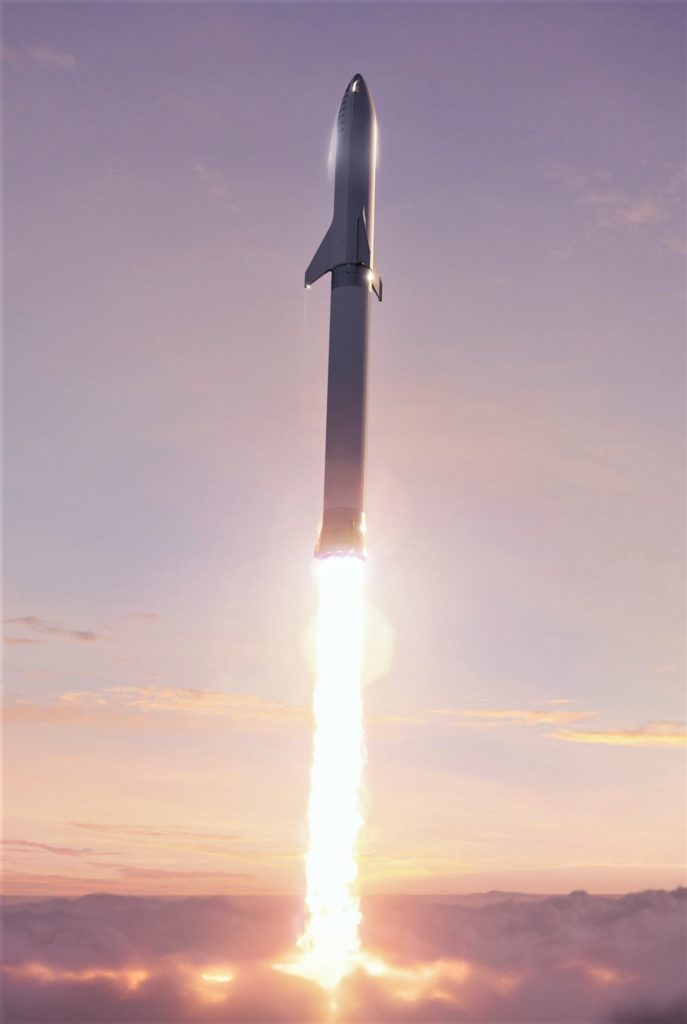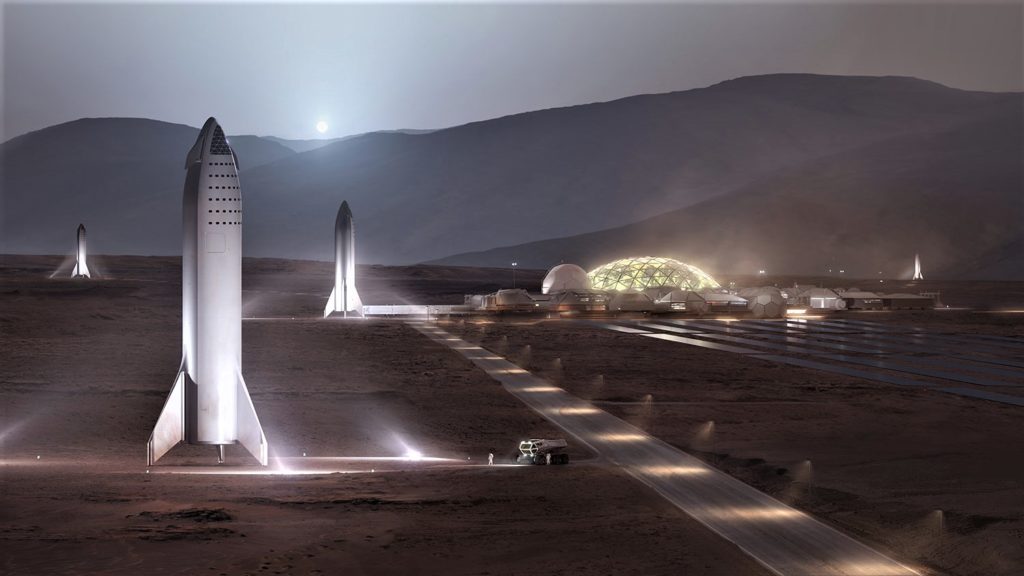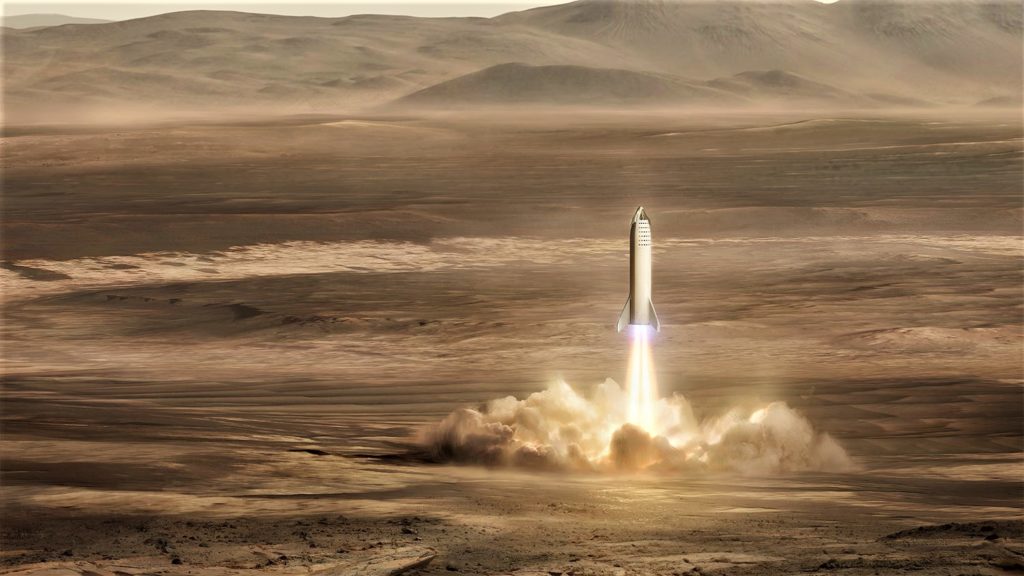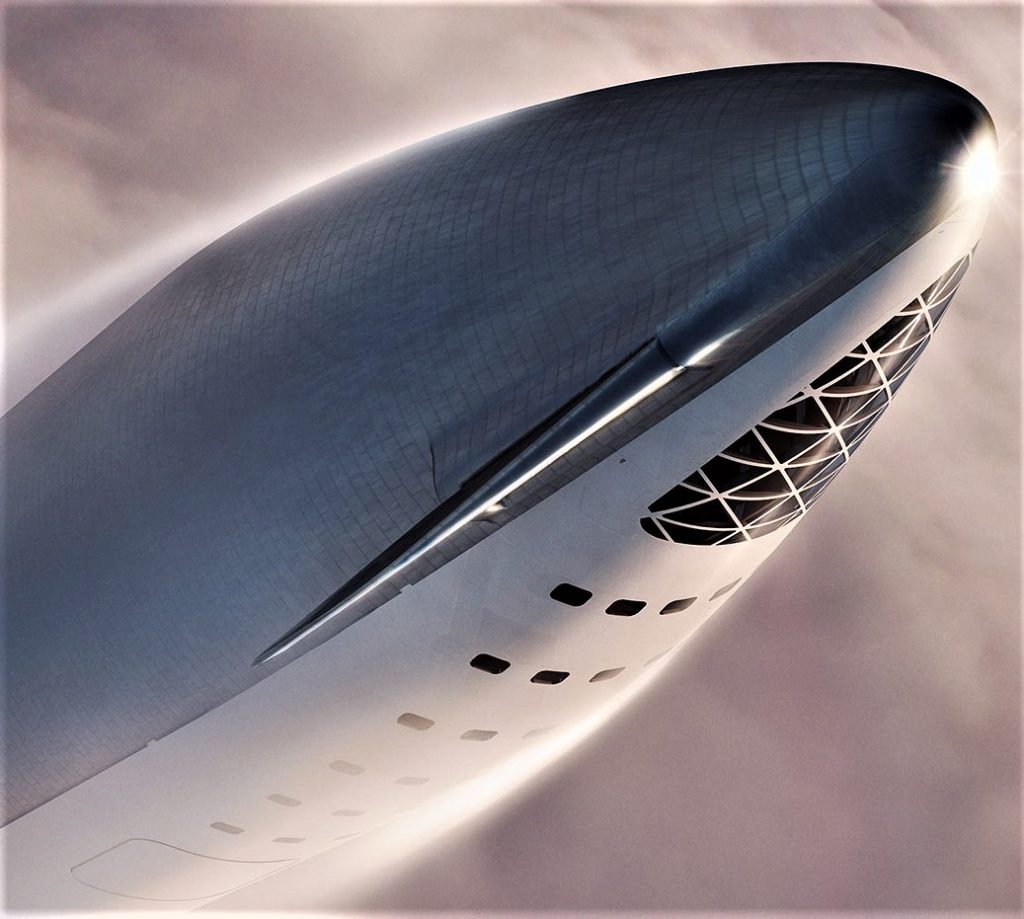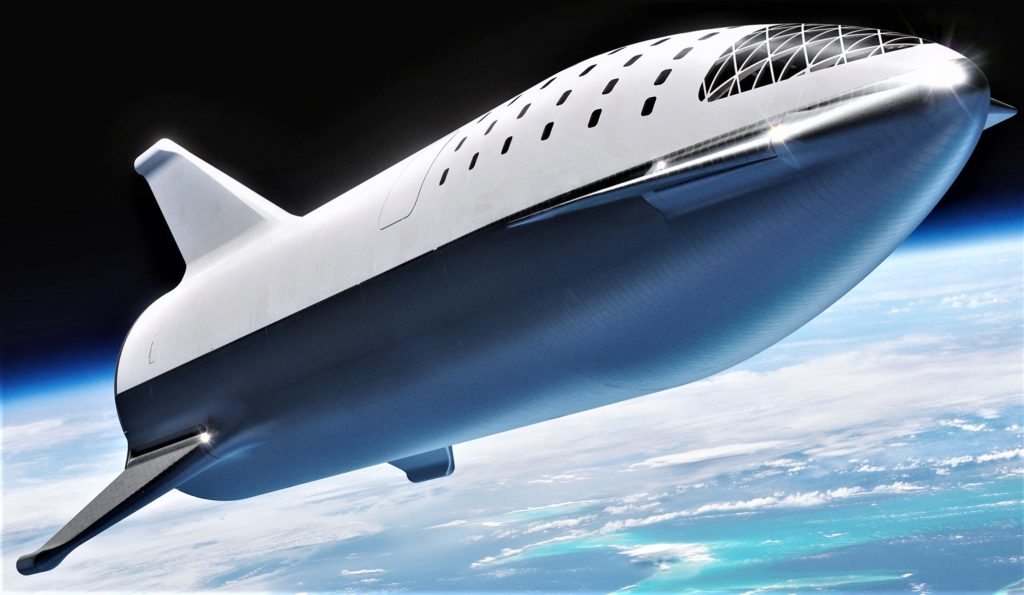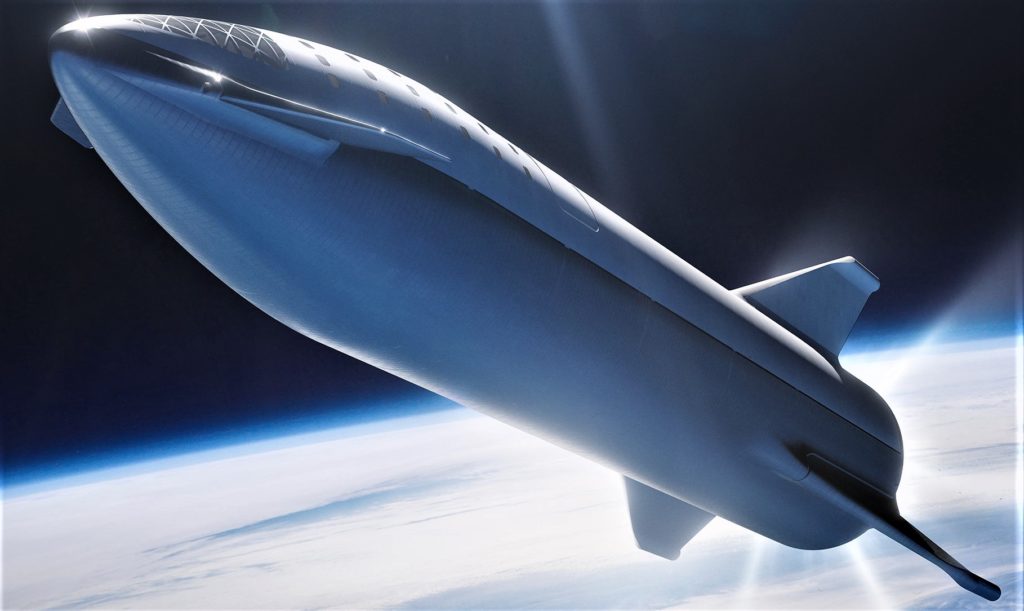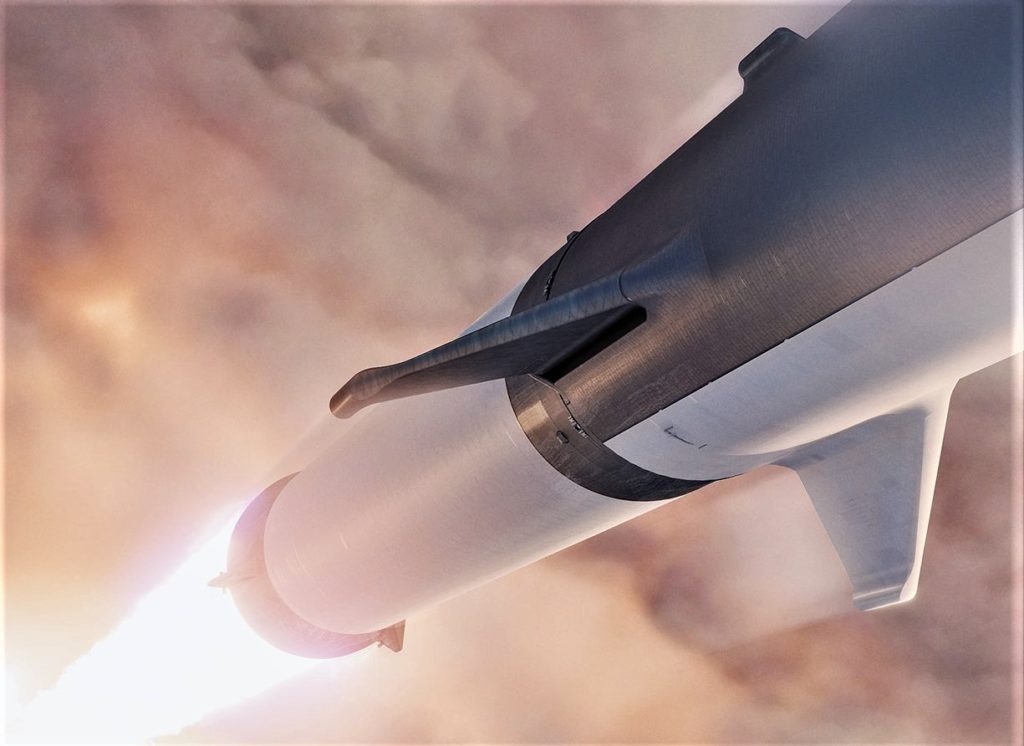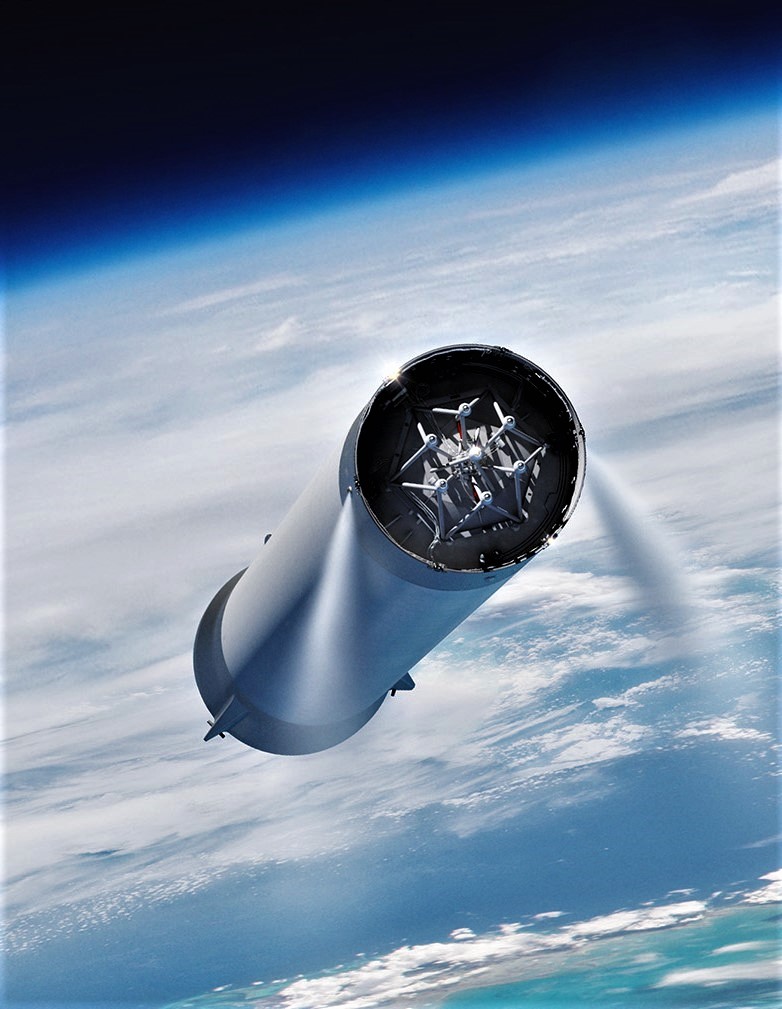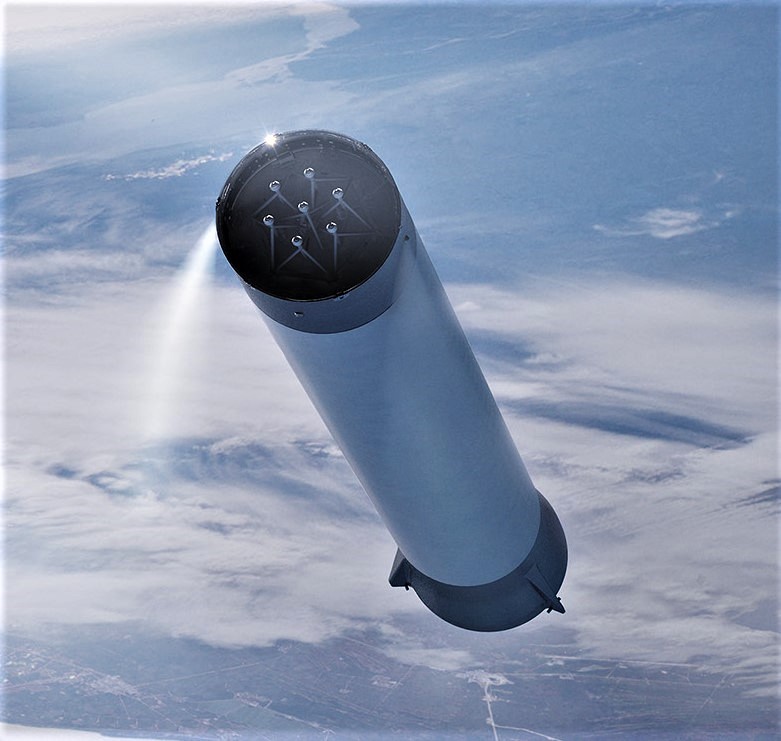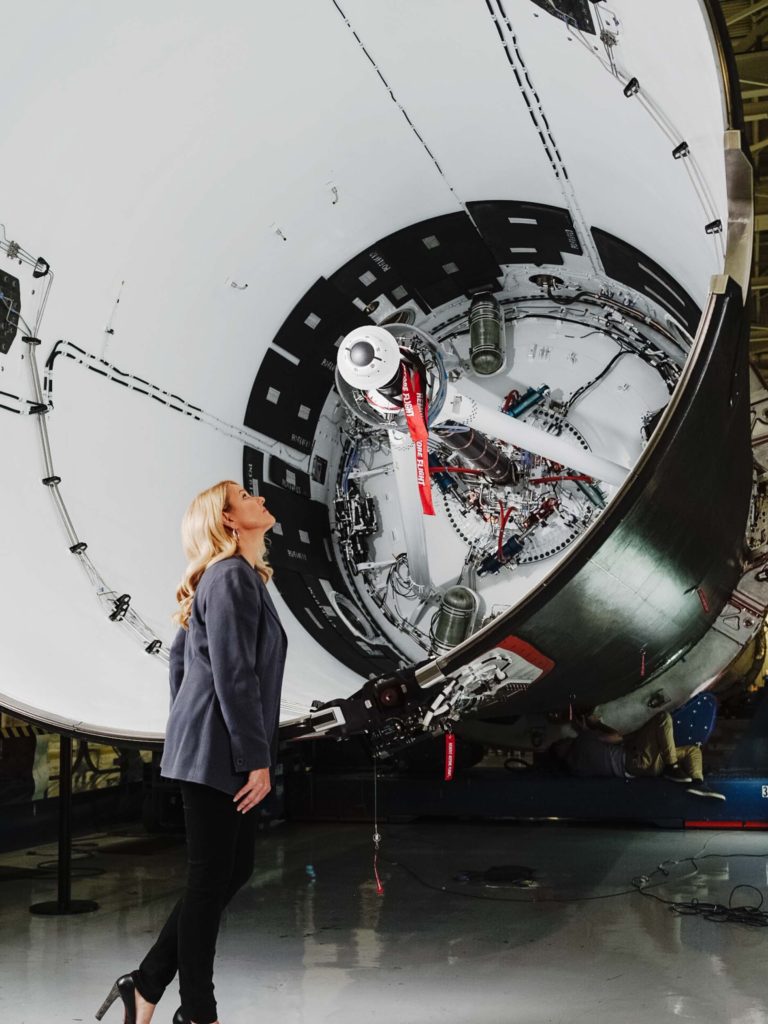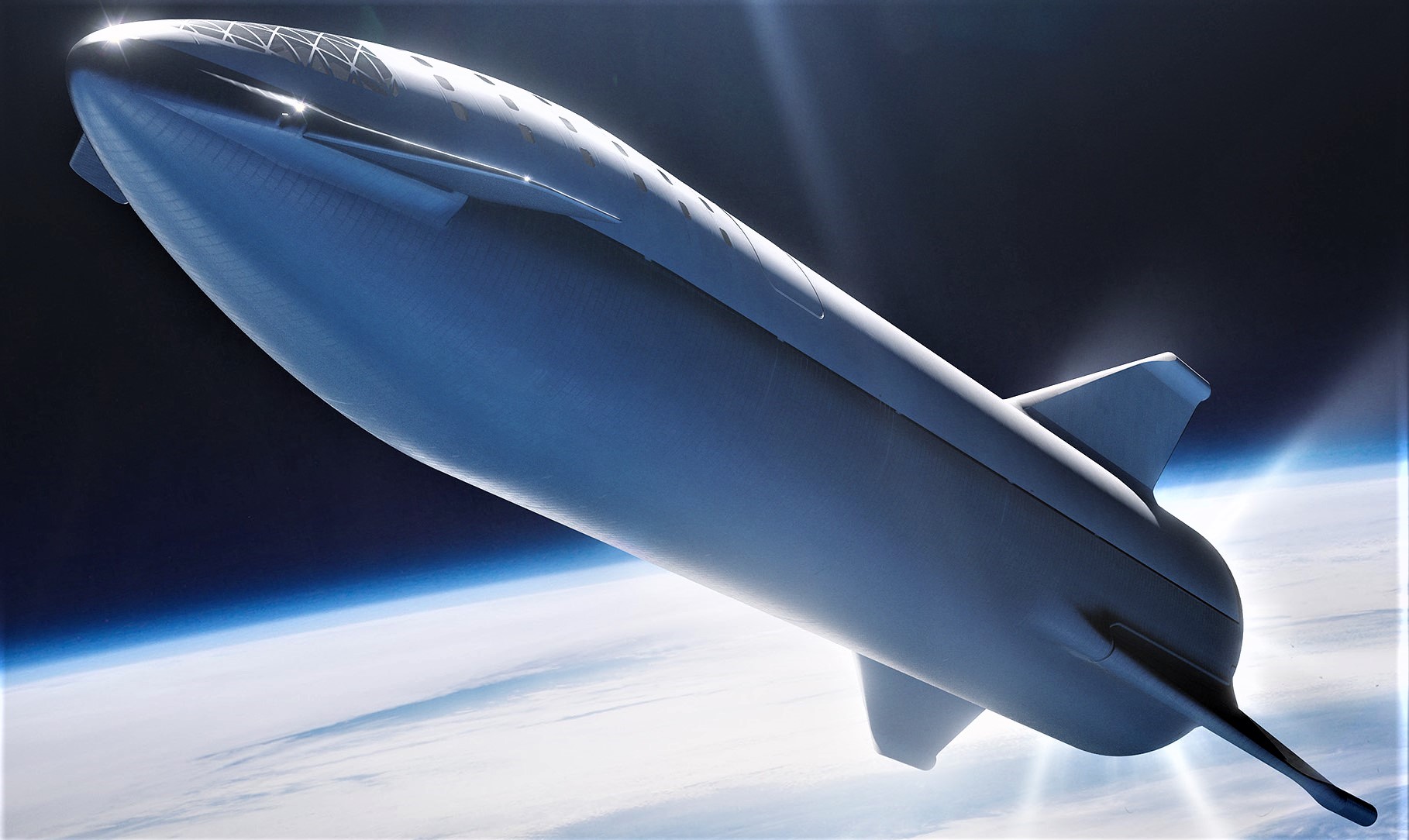
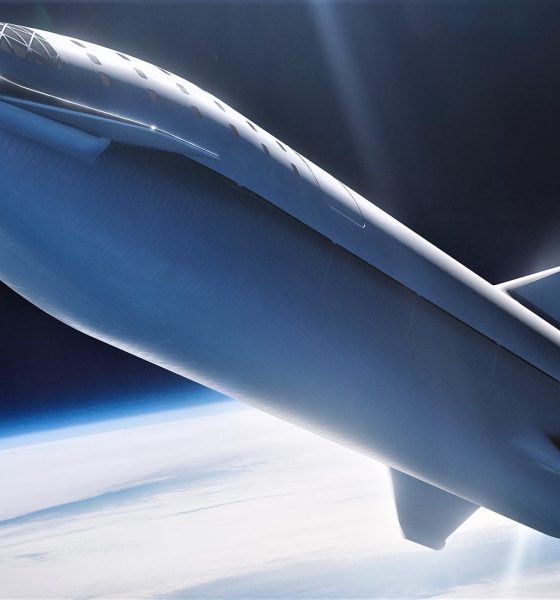
News
SpaceX’s BFR rocket and spaceship look more real than ever in new 4K renders
Following a September 17th presentation from CEO Elon Musk, SpaceX has published a series of uniquely detailed renders of BFR, showing off a number of new features present on the updated booster and spaceship, ranging from heat-shield tiles to Raptor pusher-rods.
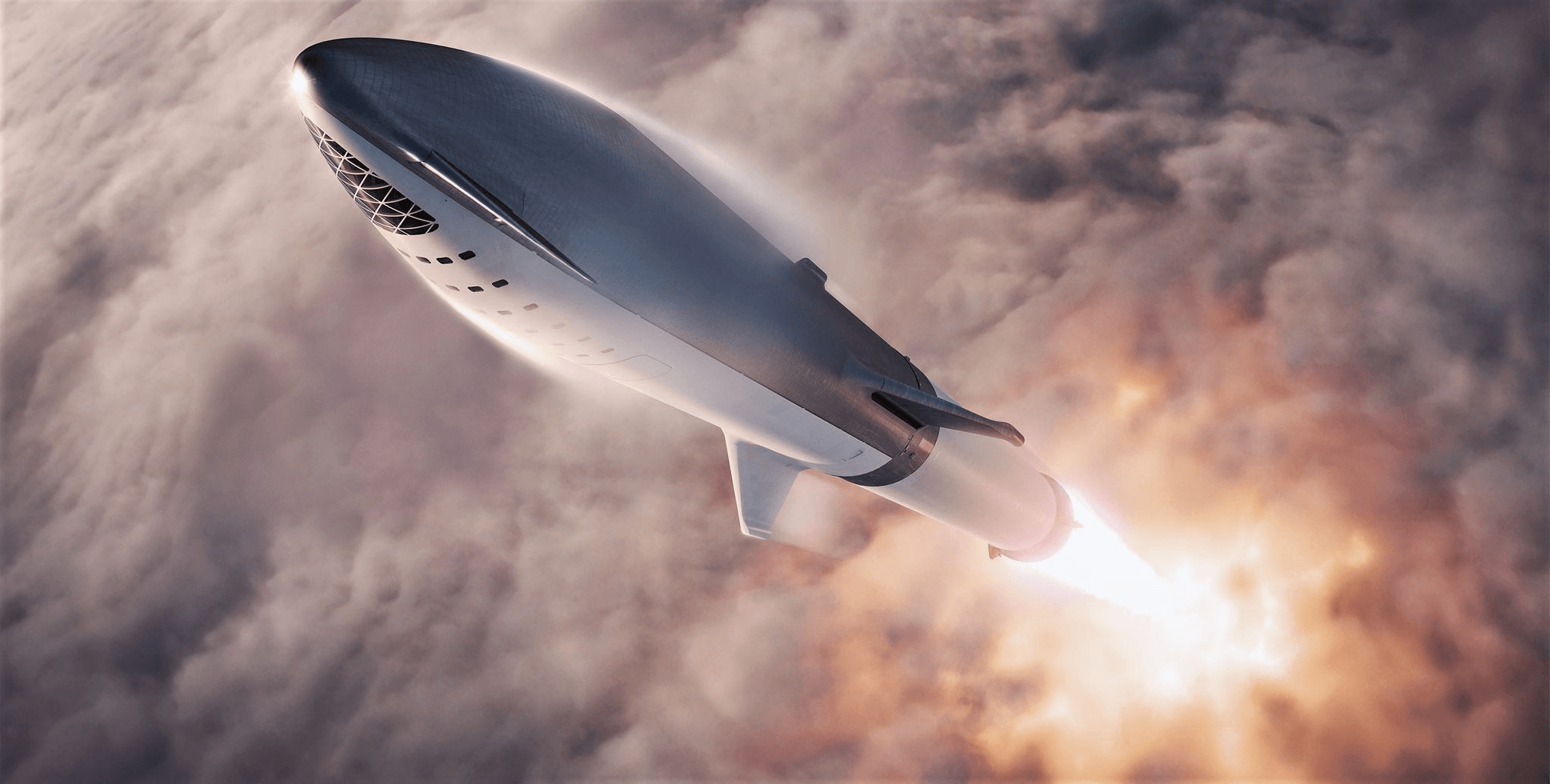
To be clear, it’s possible that a skilled 3D designer took extreme artistic license and added miscellaneous trinkets and details that generally appear to look like true rocket components, but it seems unlikely that SpaceX (or Musk) would be okay with publicizing renders of a launch vehicle that go beyond the fidelity of what is already in work at an engineering level.
As such, the exceptionally detailed renders – published in 4K with a style nearly identical to Crew Dragon CGI posted recently – may directly rely on engineering-grade CAD (computer-aided design) drawings from SpaceX’s in-house BFR development team. Chances are good that that is the case to some extent, thanks largely to the fact that SpaceX has already begun fabricating full-scale structures for the first spaceship prototype. Building huge aerospace-grade subcomponents before the overall systems design has been completed is inadvisable depending on tolerances for waste, as the most likely outcome is having to build a new component when designs invariably change before any complex system’s various components work together on paper.
- BFR (2018) breaks through a cloud layer shortly after launch. (SpaceX)
- A number of BFR (2018) spaceships seen landed at a future Mars base. (SpaceX)
- An updated spaceship lands on Mars. (SpaceX)
At a minimum, the sheer level of detail included in these updated BFR renders points to a design that is more mature and closer to reality than anything SpaceX has shown before in its series of prospective Mars rockets presented over the last two years.
Highlights from SpaceX’s BFR (2018) renders include beautiful details of heat shield tiles, visible separation mechanisms between the spaceship and booster, an extremely detailed BFR booster interstage (featuring seven pusher rods for the upper stage’s seven Raptor engines, just like Falcon 9), and even spot-on plumes from the rocket’s thrusters.
- A closeup of BFS’ nose section, featuring impressively varied tile-sizes, joining methods, and extremely precise curves on the interface between canard wings and the hull. (SpaceX)
- A slightly broader overview of BFS just after separating from the booster. Note notches along the shield/skin divide, as well as very specific access panels, hatches, and smaller protuberances. (SpaceX)
- A view of BFS just after separating from its booster stage. (SpaceX)
The latter detail is particularly interesting because the thruster pods shown firing definitively take the place of where grid fins are later shown in certain slides – the most obvious conclusion is that a lower-fidelity model of BFR was used for the presentation’s animations, whereas the 3D model used for renders was far closer to the real deal. Musk did comment on Twitter that the lack of grid fins was a simple mistake on the part of the graphic designer, but it’s hard to parse that story (reasonable as it is) and the artists’ very specific decisions to place and illustrate RCS pods in action.
Good catch. They are there in the flight design, but we forgot to put them in this render.
— Elon Musk (@elonmusk) September 17, 2018
Perhaps SpaceX is entertaining the idea of entirely replacing grid fins with RCS (reaction control system) thrusters on the BFR booster, instead relying on its stubby aft fins for aerodynamic stability and using thrusters for course correction. One way or another, it’s extremely difficult to tell – while it’s probably best to side with Musk’s official comment, the possibility still remains that the replacement of grid fins with RCS thrusters was no accident.
- A detailed view of BFR’s booster interstage, apparent lack of grid fins, RCS pod nubs, and more. (SpaceX)
- BFR’s booster, now known as Super Heavy. (SpaceX)
- Another view of the booster’s distinctly intentional RCS thrusters in place of grid fins. (SpaceX)
- A Falcon 9 Block 5 booster bares its interstage and pusher rod, offering a perfect illustration of its scale. (Bloomberg)
For prompt updates, on-the-ground perspectives, and unique glimpses of SpaceX’s rocket recovery fleet check out our brand new LaunchPad and LandingZone newsletters!

News
Tesla FSD fleet is nearing 7 billion total miles, including 2.5 billion city miles
As can be seen on Tesla’s official FSD webpage, vehicles equipped with the system have now navigated over 6.99 billion miles.

Tesla’s Full Self-Driving (Supervised) fleet is closing in on almost 7 billion total miles driven, as per data posted by the company on its official FSD webpage.
These figures hint at the massive scale of data fueling Tesla’s rapid FSD improvements, which have been quite notable as of late.
FSD mileage milestones
As can be seen on Tesla’s official FSD webpage, vehicles equipped with the system have now navigated over 6.99 billion miles. Tesla owner and avid FSD tester Whole Mars Catalog also shared a screenshot indicating that from the nearly 7 billion miles traveled by the FSD fleet, more than 2.5 billion miles were driven inside cities.
City miles are particularly valuable for complex urban scenarios like unprotected turns, pedestrian interactions, and traffic lights. This is also the difference-maker for FSD, as only complex solutions, such as Waymo’s self-driving taxis, operate similarly on inner-city streets. And even then, incidents such as the San Francisco blackouts have proven challenging for sensor-rich vehicles like Waymos.
Tesla’s data edge
Tesla has a number of advantages in the autonomous vehicle sector, one of which is the size of its fleet and the number of vehicles training FSD on real-world roads. Tesla’s nearly 7 billion FSD miles then allow the company to roll out updates that make its vehicles behave like they are being driven by experienced drivers, even if they are operating on their own.
So notable are Tesla’s improvements to FSD that NVIDIA Director of Robotics Jim Fan, after experiencing FSD v14, noted that the system is the first AI that passes what he described as a “Physical Turing Test.”
“Despite knowing exactly how robot learning works, I still find it magical watching the steering wheel turn by itself. First it feels surreal, next it becomes routine. Then, like the smartphone, taking it away actively hurts. This is how humanity gets rewired and glued to god-like technologies,” Fan wrote in a post on X.
News
Tesla starts showing how FSD will change lives in Europe
Local officials tested the system on narrow country roads and were impressed by FSD’s smooth, human-like driving, with some calling the service a game-changer for everyday life in areas that are far from urban centers.

Tesla has launched Europe’s first public shuttle service using Full Self-Driving (Supervised) in the rural Eifelkreis Bitburg-Prüm region of Germany, demonstrating how the technology can restore independence and mobility for people who struggle with limited transport options.
Local officials tested the system on narrow country roads and were impressed by FSD’s smooth, human-like driving, with some calling the service a game-changer for everyday life in areas that are far from urban centers.
Officials see real impact on rural residents
Arzfeld Mayor Johannes Kuhl and District Administrator Andreas Kruppert personally tested the Tesla shuttle service. This allowed them to see just how well FSD navigated winding lanes and rural roads confidently. Kruppert said, “Autonomous driving sounds like science fiction to many, but we simply see here that it works totally well in rural regions too.” Kuhl, for his part, also noted that FSD “feels like a very experienced driver.”
The pilot complements the area’s “Citizen Bus” program, which provides on-demand rides for elderly residents who can no longer drive themselves. Tesla Europe shared a video of a demonstration of the service, highlighting how FSD gives people their freedom back, even in places where public transport is not as prevalent.
What the Ministry for Economic Affairs and Transport says
Rhineland-Palatinate’s Minister Daniela Schmitt supported the project, praising the collaboration that made this “first of its kind in Europe” possible. As per the ministry, the rural rollout for the service shows FSD’s potential beyond major cities, and it delivers tangible benefits like grocery runs, doctor visits, and social connections for isolated residents.
“Reliable and flexible mobility is especially vital in rural areas. With the launch of a shuttle service using self-driving vehicles (FSD supervised) by Tesla in the Eifelkreis Bitburg-Prüm, an innovative pilot project is now getting underway that complements local community bus services. It is the first project of its kind in Europe.
“The result is a real gain for rural mobility: greater accessibility, more flexibility and tangible benefits for everyday life. A strong signal for innovation, cooperation and future-oriented mobility beyond urban centers,” the ministry wrote in a LinkedIn post.
News
Tesla China quietly posts Robotaxi-related job listing
Tesla China is currently seeking a Low Voltage Electrical Engineer to work on circuit board design for the company’s autonomous vehicles.

Tesla has posted a new job listing in Shanghai explicitly tied to its Robotaxi program, fueling speculation that the company is preparing to launch its dedicated autonomous ride-hailing service in China.
As noted in the listing, Tesla China is currently seeking a Low Voltage Electrical Engineer to work on circuit board design for the company’s autonomous vehicles.
Robotaxi-specific role
The listing, which was shared on social media platform X by industry watcher @tslaming, suggested that Tesla China is looking to fill the role urgently. The job listing itself specifically mentions that the person hired for the role will be working on the Low Voltage Hardware team, which would design the circuit boards that would serve as the nervous system of the Robotaxi.
Key tasks for the role, as indicated in the job listing, include collaboration with PCB layout, firmware, mechanical, program management, and validation teams, among other responsibilities. The role is based in Shanghai.
China Robotaxi launch
China represents a massive potential market for robotaxis, with its dense urban centers and supportive policies in select cities. Tesla has limited permission to roll out FSD in the country, though despite this, its vehicles have been hailed as among the best in the market when it comes to autonomous features. So far, at least, it appears that China supports Tesla’s FSD and Robotaxi rollout.
This was hinted at in November, when Tesla brought the Cybercab to the 8th China International Import Expo (CIIE) in Shanghai, marking the first time that the autonomous two-seater was brought to the Asia-Pacific region. The vehicle, despite not having a release date in China, received a significant amount of interest among the event’s attendees.
